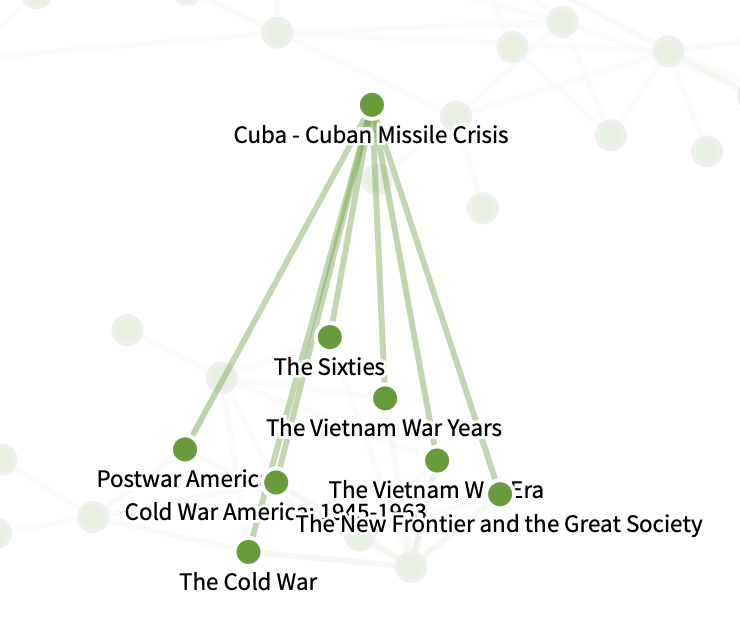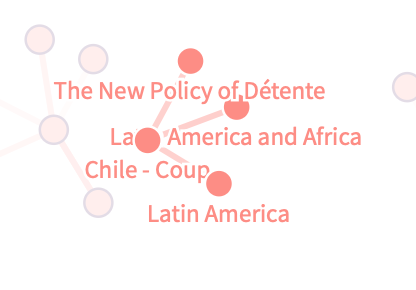Visualizations of Textbook Titles
How should I engage with the following visualizations?
This page includes multiple network analyses that demonstrate how textbooks frame events in Latin America during the Cold War within a United States-centric lens. As with all of the prior tools in this project, these visualizations are interactive, so feel free to hover your mouse over different nodes and periphery data to see how the information is connected. These different examples walk you through first how presidents and government agencies are the primary mode of analysis for these events, transitioning to then painting a more argumentative picture about how these textbooks obfuscate the times, locations, and contexts surrounding United States intervention in Latin American countries.
Chapter Titles and Cold War in Latin America Events

For example, the Cuban Missile Crisis, covered within all eight textbooks examined, appears in seven different chapter titles. These span from Postwar America and Cold War: 1945-1963, associating this event with the early parts of the Cold War, to The Vietnam War Years and the Cold War, considering the Cuban Missile Crisis to be linked with the late 1960s and the longer span of the Cold War. The inability for these textbooks to have a common understanding of where the Cuban Missile Crisis, along with other events pertaining to the Cold War in Latin America, fits in this historical narrative makes it extremely difficult for students to understand when exactly these events happened and how they all relate to the larger picture of the Cold War. This visualization challenges us to think about the chronology of the Cold War as a continual timeline as opposed to one broken up by arbitrary chapter titles.

For example, the 1973 coup d’état in Chile, orchestrated in part by the United States, falls under three different subsection titles: “The New Policy of Détente,” “Latin America,” and “Latin America and Africa.” These broad labels fail to engage the students with what events will be covered in these subsections because of the vague nature in referring to Latin America and Africa as undergoing similar struggles and contestations during the Cold War. While these regions might have been transformed due to the global nature of the Cold War, a short section on Latin America, Latin America and Africa, and Latin America within the context of China fail to give individual countries and their unique challenges an appropriate or accurate amount of space. Chile is never introduced as an important part of these sections, being mentioned as a case study for Latin America as a region that experienced many different interventions and coups over the course of the Cold War. Despite the destructive nature of the dispossession of President Salvador Allende for the installment of General Augusto Pinochet as dictator, these textbooks do not introduce Chile in any common way, contributing to the lack of organization in the presentations of this narrative.
This page has paths:
- Virginia History Textbooks and the Cold War in Latin America Tyler Goldberger